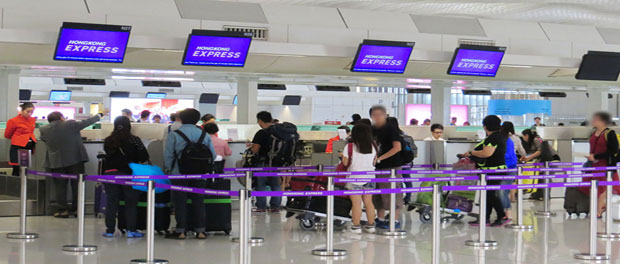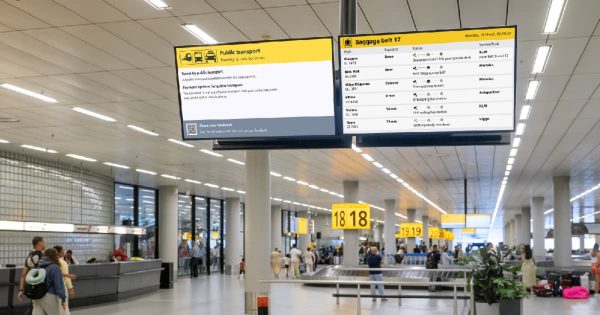The Airport Authority of Hong Kong is to deploy 120 common use self-service bag drop systems at Hong Kong International Airport.
This new system will mean that passengers self-tag their bags.
The new systems aim to speed up the bagdrop process for passengers and reduce handling costs for the airport.
The airport will integrate the Scan&Fly self-service bag-drop solution from Dutch company Type22 with the airport’s existing systems.
This will be one of the largest self bag drop deployments in the world.
Self bagdrop continues to be one of the fastest developing systems at airports worldwide. It has been around for almost 10 years and is now gradually being introduced into more airports.
How it works
There are two basic variations in use, called 1-step and 2-step.
1-step means that all functions take place at one location. So the passengers can check-in, print a bag tag, attach the tag and drop the bag at one location.
2-step means the tag is printed and attached somewhere (at a kiosk, or at home etc) before taking the bag to the self bag drop.
The 2-step method is generally seen as better.
There is also a third method, a combined process. This is available for passengers who already have a bag tag (home printed, or from a kiosk), but can also assist passengers who do not have a bag tag yet, and need to print one at Scan&Fly.
Geneva Airport has offered this solution for a few years. Approximately 50% of their passengers use Scan&Fly to print a bag tag and to drop their baggage, while the other half already has a bag tag, and uses Scan&Fly for bag-drop only.”
Gatwick self bagdrop
A few days ago I spent some time at Gatwick looking at self bagdrop systems in use there.
In the South terminal, Norwegian had four units using the 2-step method. Average time at the bag drop was about 20 seconds. Passengers found the units very easy and intuitive. It almost seemed too easy! The slowest part of the overall process was attaching the bagtag at the kiosk.
easyJet had eleven units and were using the 1-step method. I timed about twenty passengers using these units and the average time was 2.5 minutes. Most of the passengers I watched seemed to have a bit of trouble figuring out what to do but that will surely improve with use.
British Airways have abandoned their trial in the North terminal. I was told by BA staff that it was unpopular with passengers and staff as it was difficult to use. I used that self bagdrop once and also found it difficult and in my case the tag was misread a number of times. BA had used a 2-step method.
There are quite a few self bagdrop suppliers, including:







